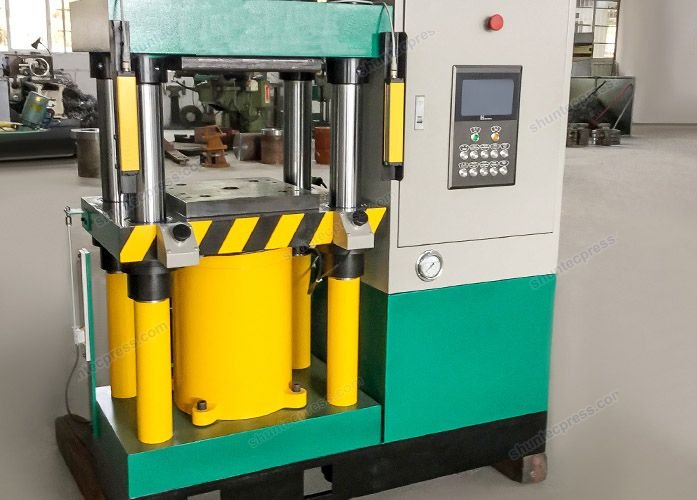


At present, there are still many difficulties in the direct drive of hydraulic pumps by high-power servo motors. The main reason is that the speed range of the hydraulic pump is very large. The minimum speed of the general hydraulic pump is 600 r/min, and the hydraulic pump can work normally even if it is below 10 r/min.
High-power AC servo motor and its control technology
The advent of the high-power AC servo motor is a new product that came into being in the past 10 years. At present, the technology mainly adopts switched reluctance motor (SMR), SMR is well known for being simple and reliable, and it also has other noticeable advantages including high-efficiency operation in a wide range of speed and torque, four-quadrant operation, fast response speed, and low cost. But it also has disadvantages which include high control costs and low power density due to the system’s nonlinear characteristics, large torque fluctuations, large vibration, etc.
The AC servo motor drive control unit is composed of large-scale integrated circuits, high-power rectifier modules, and other electronic power components. With the development of electronic technology, the performance of high-power AC servo motor drive control units has been improving, while the prices have been decreasing, which facilitates the realization and promotion of high-power AC servo drive technology, and makes it possible to adopt AC servo drives in the field of forging equipment. The focus of the research is to pull scientific research energy to develop high-power AC servo motor control technology and related application technologies with independent intellectual property rights, which will provide a solid foundation for the development of servo-hydraulic presses.
The closed-loop control technology of hydraulic pressure and position through servo motor is not mature yet. Traditional hydraulic presses control hydraulic pressure and position through proportional valves and proportional servo valves. It is necessary to study a special control algorithm to achieve the high stability and high accuracy of hydraulic pressure between 1 and 25 MPa.
In order to save more energy and reduce energy loss as much as possible, it is necessary to recover and reuse the potential energy of the sliding block's own weight and the energy generated by the pressure relief of the oil cylinder. Currently, there is no mature practice and experience in this regard yet. In terms of energy management, since instantaneous power is many times larger than average power, energy must be deployed properly in large-scale servo-hydraulic machines to avoid impact on the power grid.
Most of the existing hydraulic presses are controlled by PLC, but the servo-hydraulic presses are controlled by hydraulic pressure and speed closed-loop program, which requires a large amount of calculation, so ordinary PLC can hardly meet the needs. Therefore, the control system of the servo-hydraulic press is controlled by an industrial PC, and a special control system must be developed.
Since the materials and shapes of different kinds of stamping parts are different, the stamping processes are also different. As for the silent blanking process, for example, the control of the shifting point is the key; in reverse extrusion forming of the magnesium alloy cup-shaped part, the slider needs to experience 4 different speeds in a working cycle, and the extrusion process is under constant- pressure control. Therefore, only when the servo-hydraulic press is optimized in combination with various forming processes, can it exert its superiority. To achieve the goal of improving product quality and production efficiency and reducing production costs, it is very important to study the forming mechanism of various forming processes and establish optimized parameters suitable for each forming process.
Compared with traditional hydraulic presses, servo-hydraulic presses have more advantages such as energy-saving and noise reduction. When designing their machine body, more factors need to be considered so as to achieve these advantages, such as various possible extreme working conditions, working frequency, the complexity of stamping parts, etc. For a long time, Chinese engineers and technicians have mainly adopted empirical methods and analogy methods when designing products, and the forging machine tools have disadvantages such as large volume, heavyweight, poor control accuracy, etc. Steel consumption has been one of the key factors in product cost control for forging machine tool manufacturers.
Through a lot of effort, Chinese scholars and engineering technicians have developed relevant optimization software for partial optimization of forging machine bed components. However, they have been mainly lingering in the static design stage, and have not considered much of the dynamic machining process of the machine tool system. Therefore, the corresponding issue of machine tool reliability has not been fundamentally solved, resulting in a reduction in the service life of the machine tool and an increase in the maintenance cost of the machine tool. Therefore, it’s imperative to form a design method and technical system under the constraints of the rigidity, strength, and dynamic performance of the forging machine tool, so as to narrow the gap between our own country and developed countries in the design and manufacturing of products.

